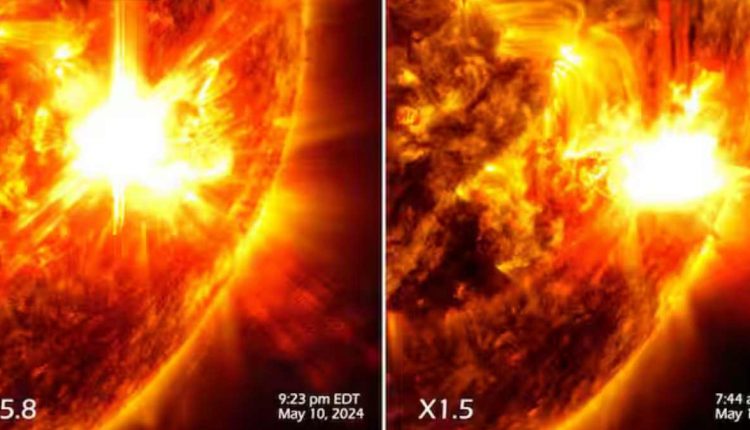NASA recently unveiled breathtaking images of solar explosions that led to powerful solar flares. These captivating visuals were captured by NASA’s Solar Dynamics Observatory, showcasing the intense celestial events that unfolded on the surface of the sun.
The eruptions, classified as X5.8 and X1.5-class flares, occurred on May 10-11, 2024, peaking at specific times on each day. These solar flares, emitting electromagnetic radiation towards Earth, not only mesmerized skywatchers worldwide but also raised concerns about potential impacts on technology infrastructure.
The National Oceanic and Atmospheric Administration (NOAA) issued alerts as coronal mass ejections (CMEs) approached our planet, highlighting the disruptive potential of geomagnetic storms on power grids, communication networks, and satellite operations.
Despite the awe-inspiring display of auroras in the skies, the scientific community remains vigilant about the implications of these solar storms.
Understanding the science behind solar flares is crucial, as these explosive events on the sun release immense energy and radiation, showcasing the dynamic and powerful nature of our closest star.

